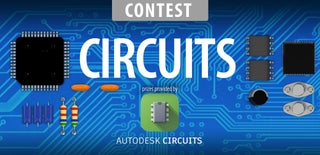Introduction: DIY Hot Wire Cutter - Portable Version
In this Instructable I will build a handheld DIY hot wire cutter. Powerful enough to cut through foam, cardboard, plexiglass, acrylic and PVC!
Step 1: How Does It Work?
A hot wire cutter works by applying current to a metal wire. Due to the wire having electrical resistance, which means that they resist the motion of electrons, the electrons bump into atoms on the outside of the wire, and some of their kinetic energy is given to the atoms as thermal energy. This thermal energy causes the wire to heat up.
As the wire is passed through the material to be cut, the heat from the wire vaporises the material just in advance of contact.
Step 2: Electronics
This hot wire cutter is super simple to make, and is made by using very inexpensive parts and electrical components. A battery is necessary to power the controller and heat up the wire. It's a small 2S (7.4V) lithium polymer battery for only 6$! In order to control the amount of current going through the nichrome wire we can use a small servo tester. Sounds expensive? Ha, the servo tester is only a dollar! You also need a brushed electric speed controller, also called ESC. This device steps down the power from the battery to the controller, as the controller only handles 5V. The ESC is very cheap and can be used for many projects in the future.
Servo tester: http://www.ebay.com/itm/USEFUL-ADJUSTMENT-STEERIN...
10A brushed ESC: http://www.ebay.com/itm/New-10A-Brushed-ESC-Speed...2S (7.4V) battery: https://hobbyking.com/en_us/turnigy-1000mah-2s-20...
The wire can be made from nichrome, kanthal or stainless steel. I recommend kanthal, but nichrome is more common. You can find it here: http://www.ebay.com/bhp/kanthal-wire
- You also need a JST connector (female)
- Shrink tubing
- Alligator clips
- 400mm 16AWG wire
- Screws
- A spring and a wing nut
Step 3: The Frame
Gather some 15x15mm square wood, and some wooden dowels with a diameter of 15mm. Cut 2 pieces of the wooden dowels 150mm long. You also need two pieces of square wood, 310mm and 320mm.
Assemble it according to picture number two using screws of appropriate length and size. Drill a hole in the very end of the shorter (310mm) piece, the hole must be larger than the screw you intend to use.
Insert the bolt through the hole and use a washer and nut in order to lock the nichrome wire into place. Thread the wing nut a couple of threads, not more than a few threads!
Use a small screw to lock the spring in place. Then take a piece of wire and lock it into place. The wing nut can now be threaded all the way to adjust the tension on the wire. If the wire keeps snapping (break) you must release some tension!
Step 4: Electronic Assembly
Solder the 16AWG wires to the alligator clips and cover it with heat shrink tubing. This is not really necessary but makes it look more clean. Attach the clips to the wire according to picture number two. The clips can be moved closer or futher apart to increase or decrease the resistance. The futher apart the clips are the more power you need to heat it up, but the larger (thicker) foam you can cut. By moving the clips closer to each other you will decrease the power required to heat it up, but the cutting thickness decreases.
Connect the 10A ESC to the controller and tape them together using electrical tape. Solder the JST connector to the negative and positive wire from the alligator clips. Attach the battery to the frame and connect the power.
The dial can be used to increase or decrease the current flow from the battery. This is very useful and convenient! Let's cut something!
Step 5: What Can We Cut?
You will be surprised how powerful the cutter can be! I began with some 6mm foam, and because of the soft material you can increase the temperature and therefore gain cutting speed. For the 50mm thick foam you need to decrease current (decrease temperature) and go slower because more foam has to be cut. However, you can still cut it quite quickly!
Now, here's when it start to become interesting. Even though it cuts slow, I was able to cut through PVC, cardboard, plexiglass and acrylic. Because of the portable design and awesome performance I use this useful tool all the time! This is a "must have" tool when building! Did you build it? Share it in the comments!
Please consider supporting me by subscribing to my YouTube-channel: https://www.youtube.com/user/RcLifeOnSimon

Runner Up in the
Epilog Contest 8

Participated in the
Circuits Contest 2016













